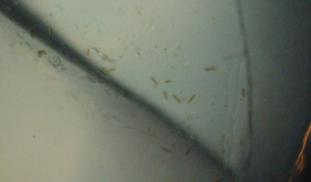Please wait...
About This Project
I want to know how ocean bacteria and algae that live on plastic debris influence the toxins plastic picks up.
Plastic debris picks up chemical pollution like heavy metals, pesticides and flame retardants from the water. These are toxins which then could be transferred to marine life, and possibly the seafood we eat.
Plastic is colonized by bacteria and algae the minute it gets into the water, and these cells form a mucus film, similar to plaque on our teeth, called a biofilm. We know biofilms alter the way chemicals stick to sediment particles, but exactly how these organisms alter the way plastic debris attracts and accumulates chemical pollutants remains a mystery. We need to find out so we can make more informed estimates about plastic as a potential source of toxins for marine life.

Browse Other Projects on Experiment
Related Projects
Addressing the terrifying issue of multi-drug resistant bacterial and fungal pathogens using synthetic organic chemistry
The synthesis of compounds inspired by the molecules of nature is a proven strategy for discovering new...
Coupling of microbial carbon capture and utilization (microCCU) and direct air capture (DAC)
Reducing atmospheric CO2 is critical to mitigating climate change, and negative emission technologies (NETs...
Enhancing Carbon Sequestration By Improving Photosynthetic Efficiency
Enhancing photosynthesis can help mitigate greenhouse gases, but plants and algae use only visible light...




